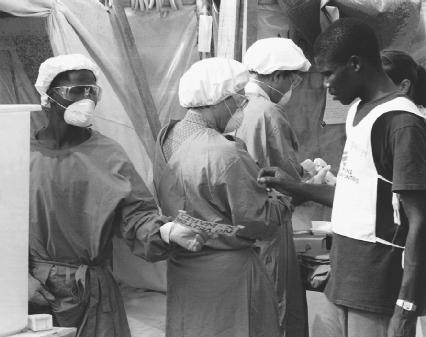Hemorrhagic Fevers - Prevention
The best way to prevent hemorrhagic fevers is to eliminate the vectors that carry the diseases. For example, efforts have been made to wipe out mosquito or rodent populations in some areas. These efforts are sometimes successful in big cities in developed nations. They are less successful in large rural areas in developing nations. In these cases, the best hope may be personal protection. People should use mosquito netting, insect repellents, and other devices to protect themselves against vectors.
Vaccines have also been developed against some hemorrhagic fevers, including yellow fever, Argentinean hemorrhagic fever, and Crimean-Congo fever. People who plan to travel in areas where these diseases occur should

be vaccinated against them. The vaccines are costly, however, and many local populations cannot afford them.

Comment about this article, ask questions, or add new information about this topic: